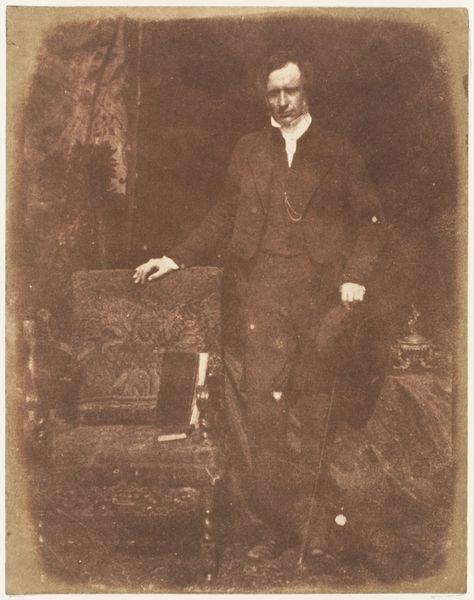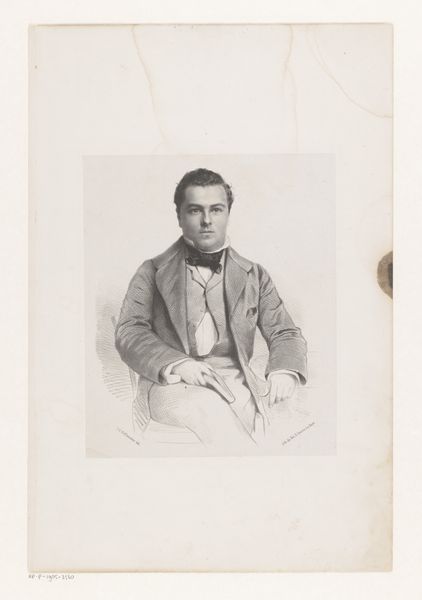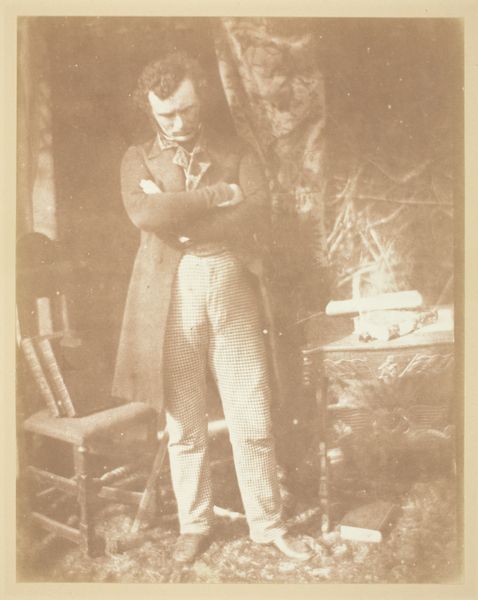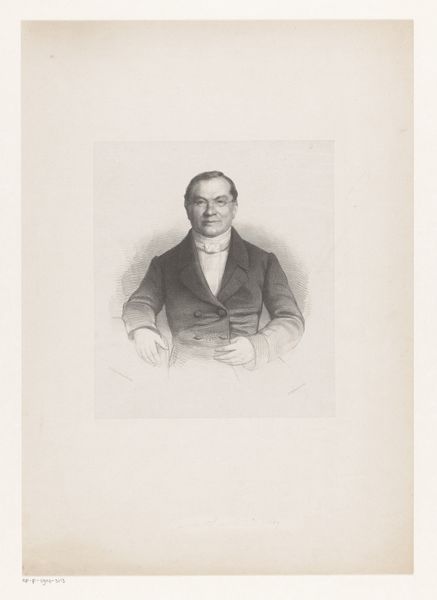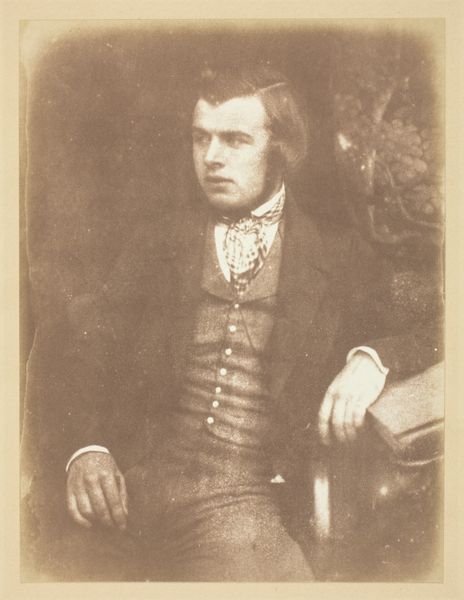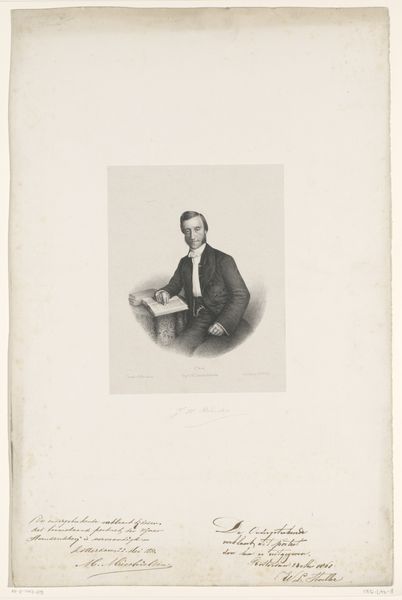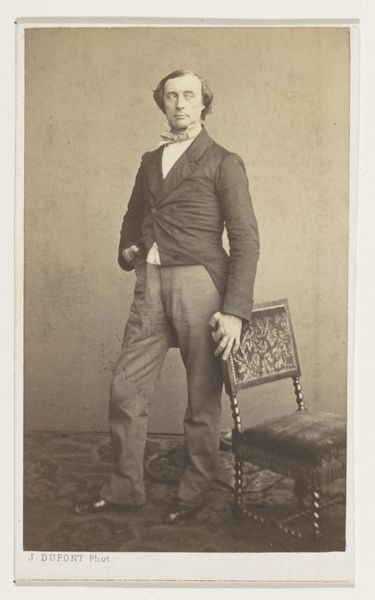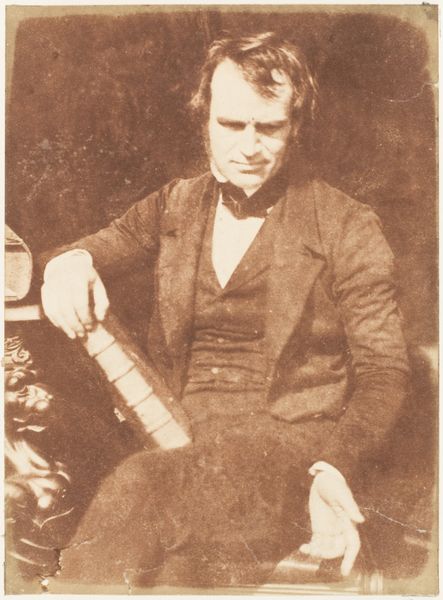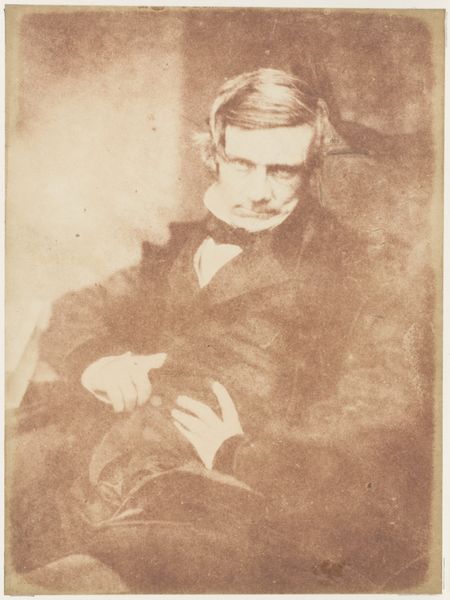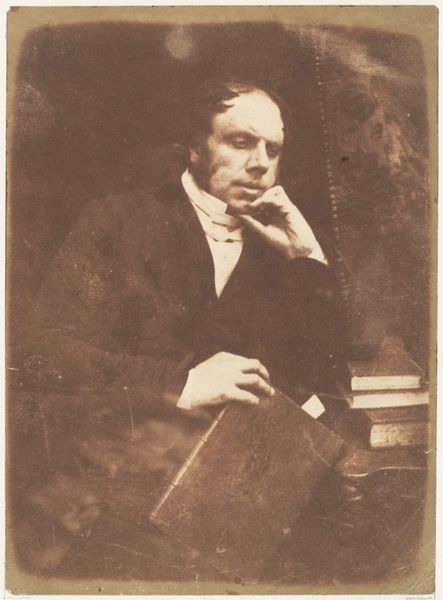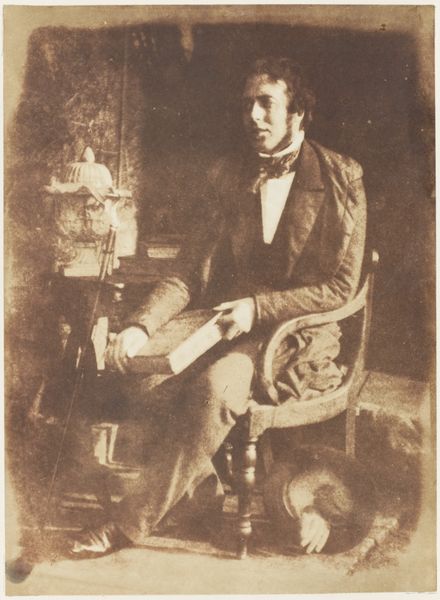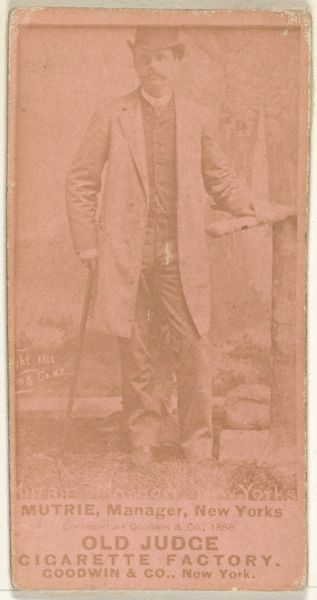
daguerreotype, photography
#
portrait
#
daguerreotype
#
figuration
#
photography
#
romanticism
#
men
#
realism
Copyright: Public Domain
Curator: This daguerreotype, titled "Thomas Duncan," was created between 1843 and 1847 by Hill and Adamson, prominent figures in early photography. Editor: The tonality is gorgeous; so sepia and moody! I'm immediately drawn to the figure's casual pose and the way the light catches on the column behind him. It makes it very sculptural for what is essentially, an early photograph. Curator: Absolutely, and its cultural context is just as captivating. Early photography provided a unique challenge to portraiture. Suddenly likenesses were democratized in a way previously only afforded to the upper class. Here, we see Thomas Duncan, captured in an image that reflects the rising middle class and its engagement with photographic portraiture. Editor: Interesting, considering it’s made with a daguerreotype. It looks as if a very difficult medium to be making very ‘democratic’ images of individuals like Duncan. What about the physical aspect? How much did the materiality dictate the actual capture? Curator: Precisely, it's a nuanced interaction. The slow exposure times inherent in the daguerreotype process forced a certain stillness, and the final, almost ethereal quality created by the silver plate gives a real sense of monumentality, which is remarkable considering its portability. Hill and Adamson's social circle really became central to early adoption and success of their business, too, thus it represents a real intersection of medium and material. Editor: The sitter almost doesn't seem very posed despite those restrictions – it's rather intimate and invites further study. The material lends an honesty – almost a trace of real lived experiences that is at once beautiful and poignant, perhaps making it seem like a modern object despite its history. Curator: I concur; thinking about its impact on public identity and representation within the confines of class at the time, it underscores the important function of early photography beyond simply a reproduction of a likeness. Editor: And the relationship of subject to the artist. When we reflect on that as another kind of 'material' for interpretation, this daguerreotype certainly enriches how we understand photography's potential.
Comments
No comments
Be the first to comment and join the conversation on the ultimate creative platform.
